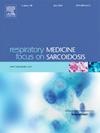Morpho-clinical insights into moderate-to-severe obstructive sleep apnea
IF 3.1
3区 医学
Q2 CARDIAC & CARDIOVASCULAR SYSTEMS
引用次数: 0
Abstract
Introduction
Obstructive sleep apnea syndrome results from recurrent upper airway obstruction during sleep. Moderate-to-severe is common in referred sleep clinics and poses significant health risks. We assessed whether a morphotype model, a clinical-complaints model, and a combined morpho-clinical model can predict MS-OSA.
Method
In a prospective cohort of referred adults undergoing type I polysomnography (n = 925, 2018–2024), we recorded demographics/anthropometry and two novel dynamic metrics, the cricomental angle (CMA) and inspiratory Mallampati score (I-MS). Logistic regression models were developed and internally validated with 80-20 split and 10-fold cross validation. Pre-specified operating points were chosen for interpretability.
Results
Among 925 patients (72.8 % male, average body mass index (BMI) of 30.3 ± 5.6 kg/m2, mean AHI 32.7 ± 24.4), daytime drowsiness (75.5 %) and snoring (74.6 %) were prevalent. Significant predictors of MS-OSA included age, male sex, BMI, neck circumference. Higher I-MS classifications and convex CMA were associated with greater odds of MS-OSA. In internal validation the comprehensive morphotype model showed high specificity (0.96) and PPV (0.82) (rule-in). The clinical-complaints model showed higher sensitivity (0.46) and NPV (0.80) (rule-out but does not exclude MS-OSA). Adding clinical features (Berlin category 1 and arterial hypertension) to the morphotype model improved overall fit (lower Akaike information criterion 737) while maintaining high specificity.
Conclusion
We propose a simple three step workflow or an alternative on step option to support triage in specialist clinics. Future work should focus on refining and validating these tools across diverse populations. The proposed models are designed for triage and prioritization rather than to replace or restrict diagnostic testing.
中度至重度阻塞性睡眠呼吸暂停的形态-临床见解
梗阻性睡眠呼吸暂停综合征是由睡眠中反复出现的上呼吸道阻塞引起的。中度至重度在转诊的睡眠诊所很常见,会带来重大的健康风险。我们评估了形态模型、临床-症状模型和形态-临床联合模型是否可以预测MS-OSA。方法在一组接受I型多导睡眠描记仪检查的成人前瞻性队列中(n = 925, 2018-2024),我们记录了人口统计学/人体测量学和两个新的动态指标,批评家角(CMA)和吸气Mallampati评分(I- ms)。建立Logistic回归模型,并采用80-20分割和10倍交叉验证进行内部验证。为了便于解释,选择了预先指定的操作点。结果925例患者中,男性占72.8%,平均身体质量指数(BMI)为30.3±5.6 kg/m2,平均AHI为32.7±24.4,白天嗜睡(75.5%)、打鼾(74.6%)较多。MS-OSA的显著预测因子包括年龄、男性性别、BMI、颈围。较高的I-MS分类和凸型CMA与MS-OSA的发生率相关。在内部验证中,综合形态型模型具有较高的特异性(0.96)和PPV (0.82) (rule-in)。临床投诉模型显示更高的敏感性(0.46)和NPV(0.80)(排除但不排除MS-OSA)。在形态学模型中加入临床特征(Berlin 1类和动脉高血压),提高了整体拟合(较低的赤池信息标准737),同时保持了高特异性。结论我们提出了一个简单的三步工作流程或替代的步骤选项,以支持专科诊所的分诊。未来的工作应侧重于在不同人群中改进和验证这些工具。建议的模型是为分类和优先排序而设计的,而不是取代或限制诊断测试。
本文章由计算机程序翻译,如有差异,请以英文原文为准。
求助全文
约1分钟内获得全文
求助全文
来源期刊

Respiratory medicine
医学-呼吸系统
CiteScore
7.50
自引率
0.00%
发文量
199
审稿时长
38 days
期刊介绍:
Respiratory Medicine is an internationally-renowned journal devoted to the rapid publication of clinically-relevant respiratory medicine research. It combines cutting-edge original research with state-of-the-art reviews dealing with all aspects of respiratory diseases and therapeutic interventions. Topics include adult and paediatric medicine, epidemiology, immunology and cell biology, physiology, occupational disorders, and the role of allergens and pollutants.
Respiratory Medicine is increasingly the journal of choice for publication of phased trial work, commenting on effectiveness, dosage and methods of action.
 求助内容:
求助内容: 应助结果提醒方式:
应助结果提醒方式:


